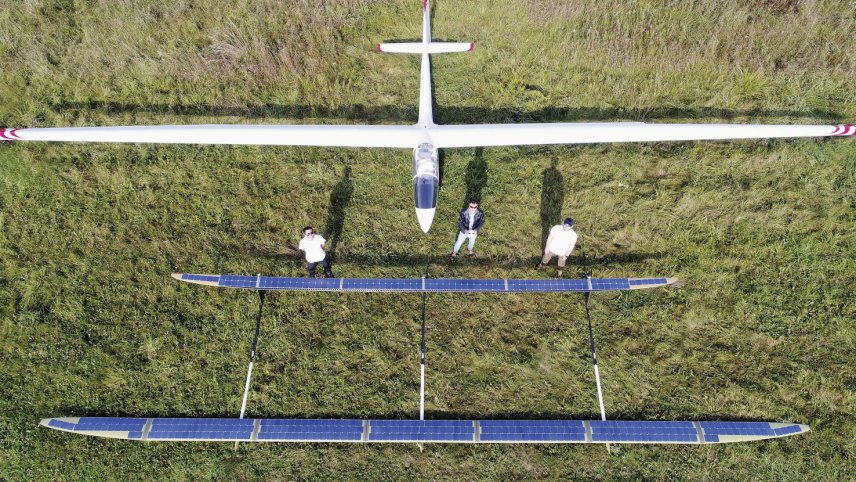
UAVOS in October flight tested in Belarus a modified version of its ApusDuo high-altitude platform system (HAPS) aircraft that features a 14 m wingspan.
UAVOS spokesperson Taisia Vasiukovich said on 5 November that the goal of the flight test was to verify the aircraft’s power consumption, control algorithms, and aerodynamic characteristics. This modified ApusDuo has a wingspan 1.5x longer than its predecessor, improved control algorithms to reduce power consumption in horizontal flight, and new highly efficient maximum power point tracking (MPPT) energy conversion controllers. These MPPT controllers have less weight and allow UAVOS to split the ApusDuo’s solar panels into small groups for more efficient use of solar energy in low and uneven lighting conditions.

UAVOS successfully flight tested a 14 m wingspan version of its ApusDuo solar powered high altitude platform system (HAPS), pictured below. (UAVOS)
There were several test flights that lasted less than one hour. One test flight took off from a grass runway using an electric winch. Another flight took off from a paved runway under the aircraft’s own power using landing gears. Vasiukovich said the ApusDuo’s fuselage shape has what resembles landing skids to facilitate belly landings on unpaved landing strips.
UAVOS plans to next test the 14 m wingspan ApusDuo in the stratosphere, which is just above 47,520 feet altitude. UAVOS has a goal of developing an ApusDuo aircraft that has a 28 m wingspan and an 8 kg payload capacity. UAVOS in November 2018 completed the first flight of its ApusDuo 10 m wingspan prototype.
This article, originally published on 5 November, has been updated with imagery.
Looking to read the full article?
Gain unlimited access to Janes news and more...




